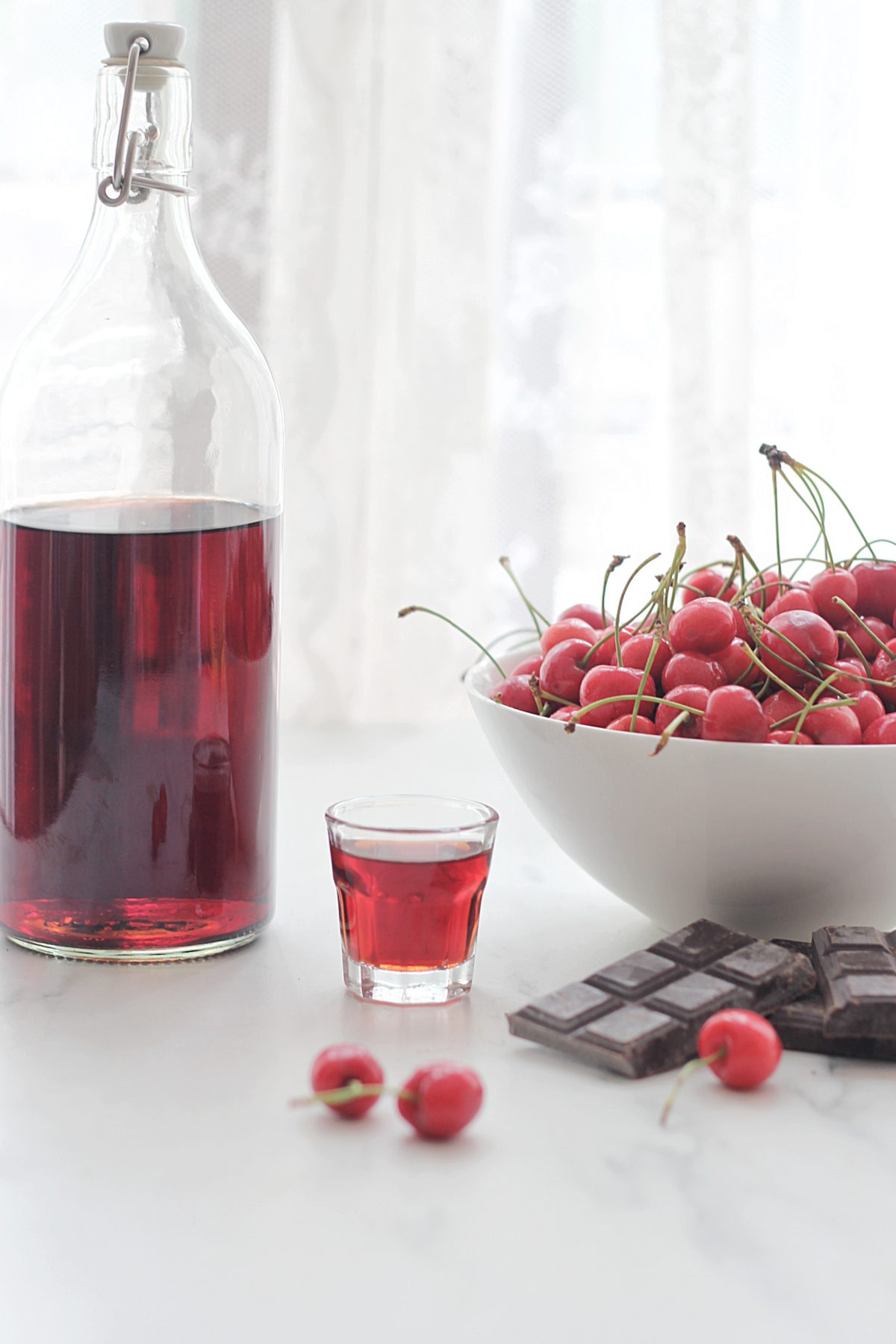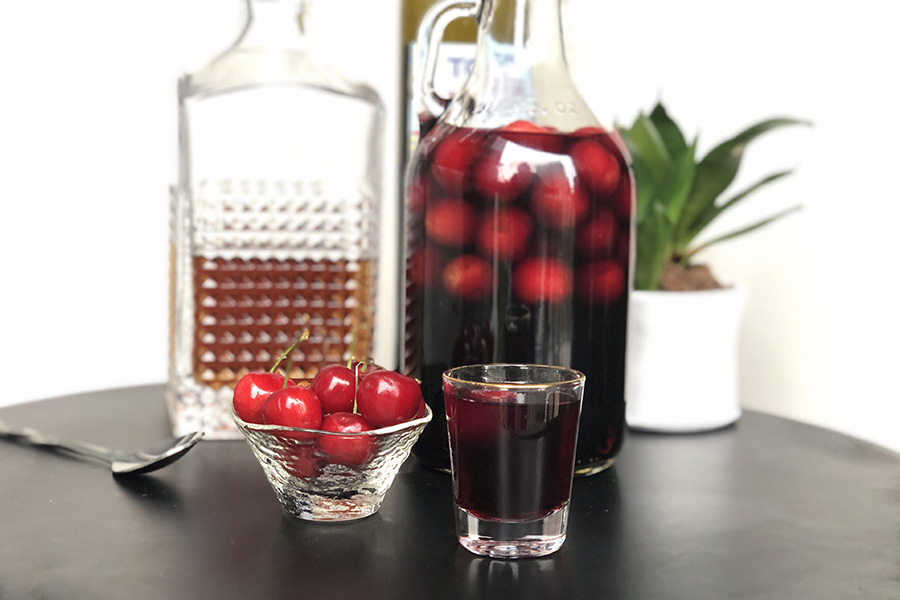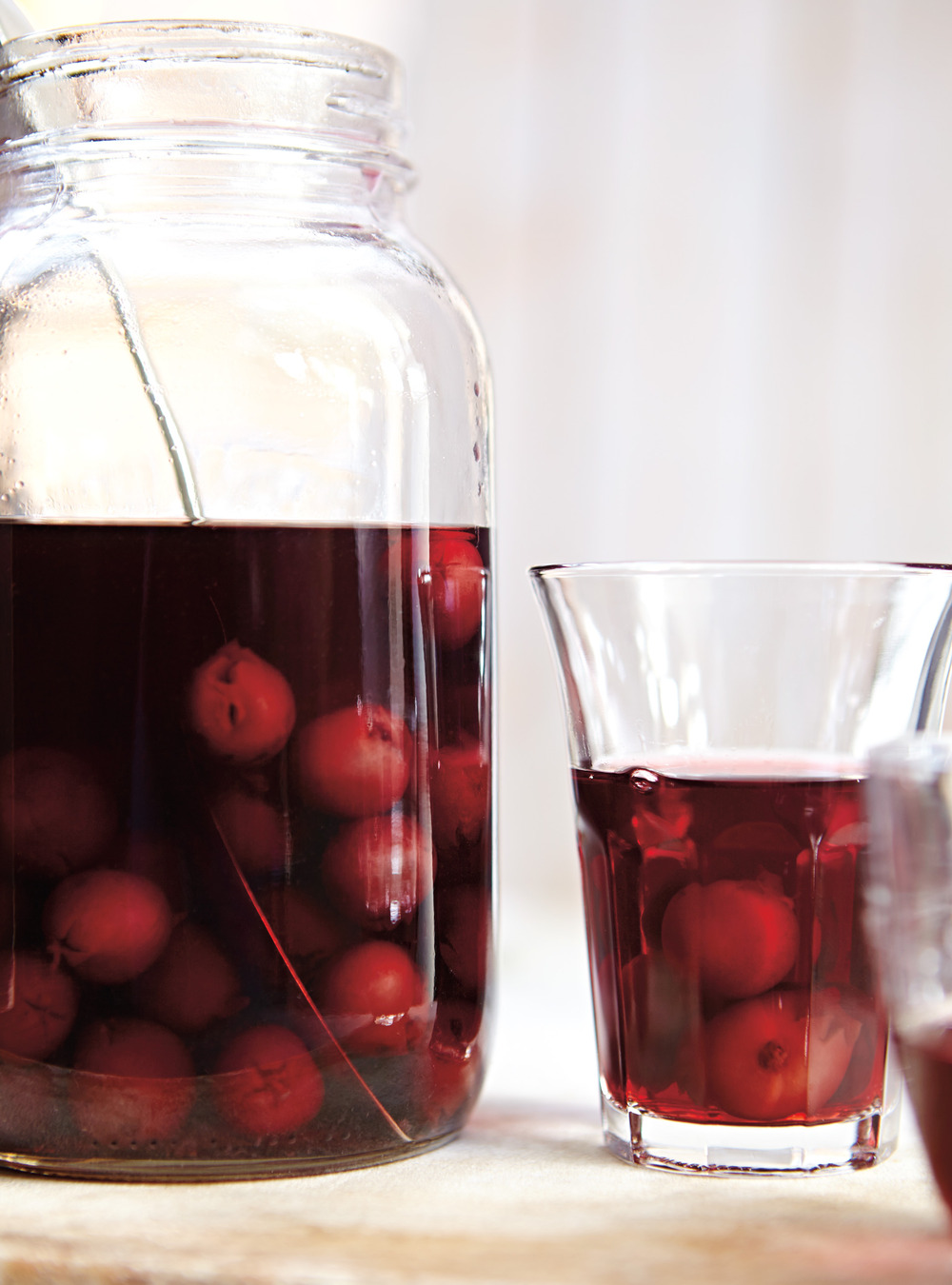Ginjinha
ginginha, ginginha aguardente, ginja
Ginjinha , or simply ginja, is a Portuguese liqueur made by infusing ginja berries (sour cherry, Prunus cerasus austera, the Morello cherry) in alcohol (aguardente) and adding sugar together with other ingredients, with cloves and/or cinnamon sticks being the most common. Ginjinha is served in a shot form with a piece of the fruit in the bottom of the cup. It is a favourite liqueur of many Portuguese and a typical drink in Lisbon, Alcobaça, Óbidos, Marvão, Covilhã and Algarve. The Serra da Estrela ginja, centered around Covilhã, has protected designation of origin. The Ginjinha of Praça de São Domingos in Lisbon was the first establishment in that city to commercialize the drink that gives its name to it. A Galician friar of the Church of Santo António, Francisco Espinheira, had the experience of leaving ginja berries in aguardente, adding sugar, water and cinnamon. The success was immediate and ginjinha became the typical drink of Lisbon. In the 2000s, the business was in the hands of the fifth generation. Around 150,000 litres (33,000 imp gal; 40,000 US gal) of ginjinha are produced each year, around 90% is consumed in Portugal and only around 10% is exported, the majority of it to the United States. The traditional liqueur is served all around Portugal, but is especially prominent in the Oeste and Lisbon regions. In Óbidos, Ginjinha is commonly served in a small edible chocolate cup. The sour cherry used to produce the Ginja from Alcobaça and Óbidos was applied for a PGI status in 2013.
Source: Wikipedia



